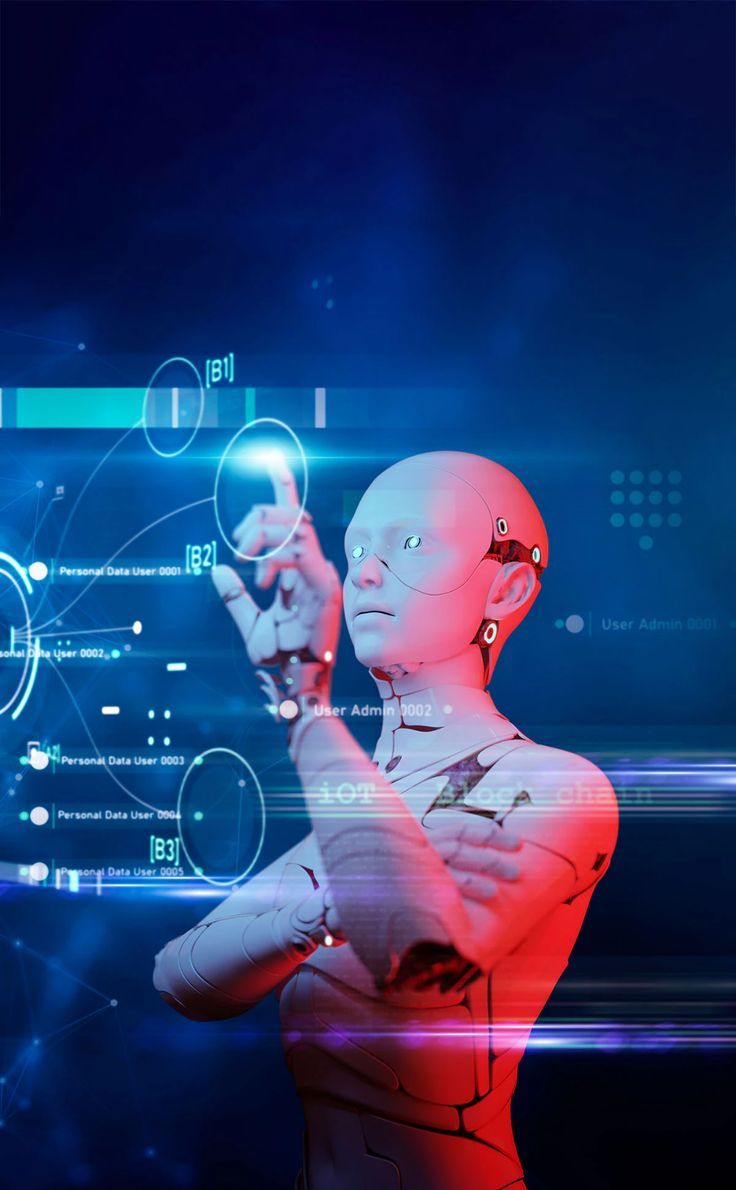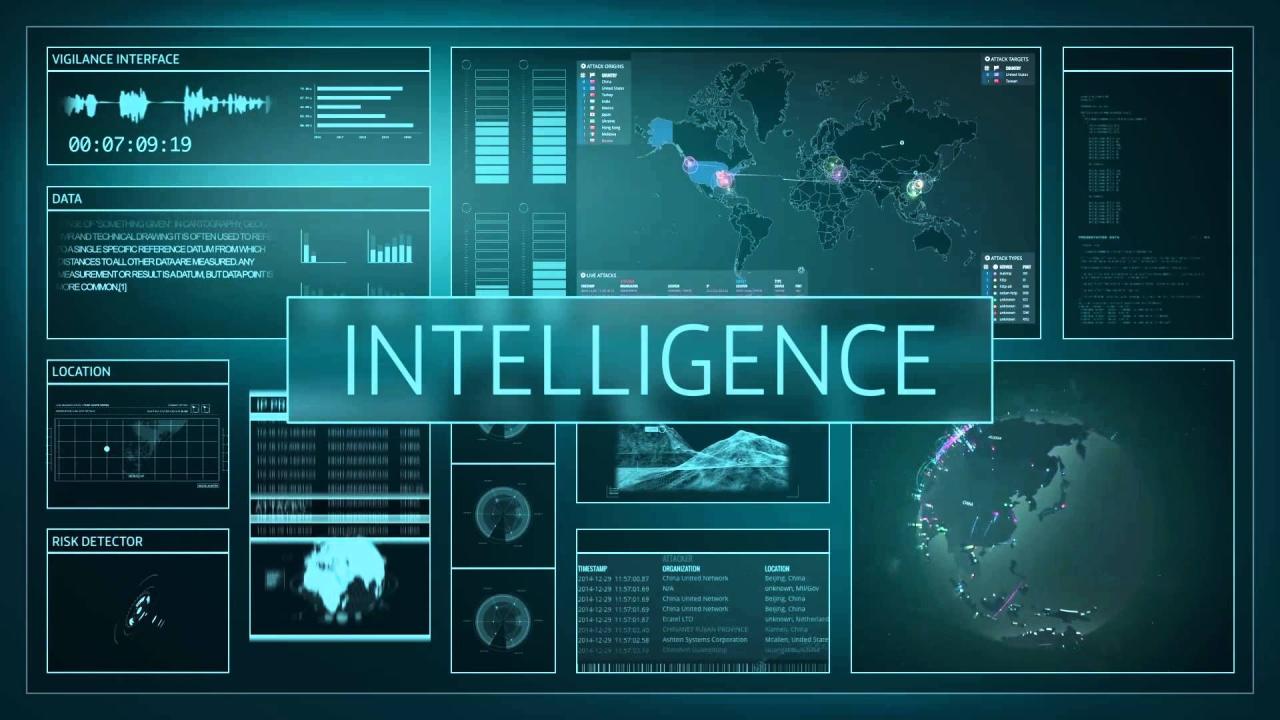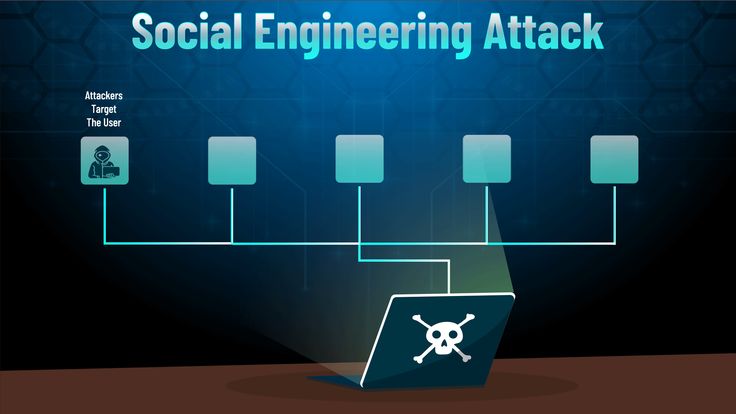In an increasingly interconnected world, where every aspect of our lives – from personal finances to critical infrastructure – is intertwined with digital networks, the integrity and security of these systems have become paramount. This is the domain of cybersecurity, a vast and dynamic field dedicated to protecting internet-connected systems, including hardware, software, and data, from cyber threats. More than just a technical discipline, cybersecurity is a continuous strategic battle against ever-evolving adversaries. It’s about building resilient digital defenses, fostering a culture of vigilance, and constantly adapting to safeguard our digital frontiers from malicious attacks, data breaches, and other pervasive online dangers.
The Digital Revolution and the Rise of Cyber Threats
To fully appreciate the critical importance of cybersecurity today, we must first understand the rapid digital transformation that has swept across industries and personal lives, inadvertently creating fertile ground for sophisticated cyber threats.
A. Ubiquitous Connectivity and Data Proliferation
The past few decades have witnessed an unprecedented surge in digital connectivity and an explosion in the volume of data generated and transmitted.
- Internet’s Pervasive Reach: The internet, once a niche academic tool, is now the backbone of global commerce, communication, and entertainment. Billions of devices, from smartphones and laptops to smart home appliances and industrial sensors, are constantly connected, creating an expansive attack surface.
- Explosion of Digital Data: Every interaction, transaction, and communication in the digital realm generates data. This ‘data deluge’ includes sensitive personal information, proprietary business intelligence, financial records, and critical governmental data, all of which are valuable targets for cybercriminals.
- Cloud Computing Adoption: The widespread adoption of cloud services means vast amounts of data and critical applications are hosted remotely. While cloud providers offer robust security, shared responsibility models mean users also bear a significant burden for securing their data and configurations within the cloud.
- Internet of Things (IoT) Expansion: Billions of IoT devices, from smartwatches to industrial control systems, are connecting to networks. Many of these devices have limited security features, creating new entry points for attackers and expanding the potential for large-scale distributed attacks.
B. The Evolving Landscape of Cyber Adversaries
As our digital footprint expands, so too does the sophistication and motivation of cyber adversaries. The threat actors are diverse, each with distinct goals and methods.
- Cybercriminals: This is the largest and most common group, motivated primarily by financial gain. They engage in activities like ransomware, phishing, credit card fraud, identity theft, and extortion. They operate like businesses, often with sophisticated tools and global networks.
- Nation-State Actors: These are government-sponsored groups engaged in espionage, sabotage, intellectual property theft, and political disruption. They often possess advanced capabilities, extensive resources, and target critical infrastructure, governmental agencies, and defense contractors.
- Hacktivists: Motivated by political or social causes, hacktivists use cyberattacks to draw attention to their messages, disrupt operations, or expose sensitive information. Their attacks can range from website defacements to large-scale data leaks.
- Insider Threats: Disgruntled employees, negligent staff, or compromised insiders can pose significant risks. They have legitimate access to systems, making their activities harder to detect, and can cause immense damage through data theft, sabotage, or unintentional security breaches.
- Competitors: In some cases, businesses may engage in corporate espionage or disruptive attacks against rivals to gain a competitive edge or cause financial harm.
The sheer variety and evolving nature of these threat actors necessitate a robust and multi-faceted approach to cybersecurity.
Foundational Pillars of Robust Cybersecurity
Effective cybersecurity is built upon several foundational pillars, each addressing a critical aspect of defense. It’s a holistic strategy, not a collection of isolated tools.
A. Confidentiality: Protecting Sensitive Information
Confidentiality ensures that sensitive information is accessible only to authorized individuals or systems. It’s about preventing unauthorized disclosure.
- Encryption: Using cryptographic algorithms to scramble data, rendering it unreadable to unauthorized parties. This applies to data at rest (stored on devices or in databases) and data in transit (over networks).
- Access Controls: Implementing strict rules and policies that determine who can access what resources and under what conditions. This includes role-based access control (RBAC), least privilege principles, and segregation of duties.
- Data Masking/Redaction: Obscuring sensitive data in non-production environments or when presented to unauthorized users.
- Physical Security: Protecting the physical hardware where data is stored from unauthorized access or theft.
B. Integrity: Ensuring Data Accuracy and Trustworthiness
Integrity ensures that data remains accurate, complete, and trustworthy throughout its lifecycle. It prevents unauthorized modification or deletion.
- Data Hashing: Using cryptographic hash functions to generate unique digital fingerprints of data. Any alteration to the data will result in a different hash, indicating tampering.
- Digital Signatures: Cryptographically binding a digital signature to data to verify its origin and ensure it hasn’t been altered since it was signed.
- Version Control: For code and configurations, version control systems (like Git) track changes and allow rollbacks, preventing unauthorized or erroneous modifications from becoming permanent.
- Access Controls (Write/Modify): Limiting who has permissions to modify or delete data.
C. Availability: Ensuring Uninterrupted Access
Availability ensures that authorized users can access information and systems when needed, without interruption. It protects against denial-of-service attacks and system failures.
- Redundancy and Failover: Designing systems with redundant components and automatic failover mechanisms so that if one component fails, another takes over seamlessly.
- Load Balancing: Distributing network traffic across multiple servers to prevent any single server from becoming overwhelmed.
- Disaster Recovery (DR) and Business Continuity Planning (BCP): Establishing plans and procedures to recover from major disruptions (e.g., natural disasters, widespread cyberattacks) and resume critical business operations.
- Distributed Denial of Service (DDoS) Protection: Implementing measures to mitigate large-scale attacks designed to overwhelm systems and make them unavailable.
- Regular Backups: Creating regular, verifiable backups of data and system configurations to enable recovery in case of data loss or corruption.
D. Authentication: Verifying Identity
Authentication verifies the identity of users or systems attempting to access resources.
- Passwords: The most common form, but requires complexity, regular changes, and protection.
- Multi-Factor Authentication (MFA): Requiring two or more distinct forms of verification (e.g., password + one-time code from a phone app, or password + fingerprint). This significantly enhances security.
- Biometrics: Using unique physical or behavioral characteristics (fingerprints, facial recognition, iris scans) for identity verification.
- Digital Certificates: Using cryptographic certificates to verify the identity of servers or applications in secure communication.
E. Authorization: Granting Permissions
Authorization determines what an authenticated user or system is permitted to do once access is granted.
- Role-Based Access Control (RBAC): Assigning permissions based on a user’s role within an organization (e.g., ‘administrator,’ ‘developer,’ ‘read-only user’).
- Least Privilege Principle: Granting users or systems only the minimum necessary permissions required to perform their specific tasks, reducing the attack surface.
- Attribute-Based Access Control (ABAC): More granular than RBAC, ABAC grants permissions based on multiple attributes (e.g., user attributes, resource attributes, environmental conditions).
Major Categories of Cyber Threats and Attacks
The threat landscape is vast and constantly evolving. Understanding the common types of attacks is crucial for building effective defenses.
A. Malware: Malicious Software
Malware is a broad term for any software intentionally designed to cause damage to a computer, server, client, or computer network, or to gain unauthorized access.
- Viruses: Malicious code that attaches itself to legitimate programs and spreads when those programs are executed, often corrupting data or taking over systems.
- Worms: Self-replicating malware that spreads across networks without human intervention, often exploiting vulnerabilities to infect multiple systems rapidly.
- Ransomware: Malware that encrypts a victim’s files and demands a ransom payment (typically in cryptocurrency) for their decryption. It can cripple businesses and individuals.
- Spyware: Secretly monitors and collects information about a user’s activities (e.g., Browse history, keystrokes) without their knowledge.
- Adware: Unwanted software designed to display intrusive advertisements.
- Trojans: Malicious programs disguised as legitimate software. Unlike viruses or worms, they don’t self-replicate but provide backdoors for attackers.
B. Phishing and Social Engineering
Social engineering involves manipulating people into divulging confidential information or performing actions that benefit the attacker. Phishing is a common type of social engineering attack.
- Phishing: Deceptive emails, messages, or websites designed to trick recipients into revealing sensitive information (e.g., login credentials, credit card numbers) or downloading malware. They often impersonate legitimate entities.
- Spear Phishing: Highly targeted phishing attacks aimed at specific individuals or organizations, often leveraging personalized information to increase credibility.
- Whaling: A type of spear phishing targeting high-profile individuals within an organization (e.g., CEOs, CFOs) for large-scale financial fraud or data theft.
- Vishing (Voice Phishing) & Smishing (SMS Phishing): Phishing attacks conducted via phone calls or text messages.
C. Denial-of-Service (DoS) and Distributed Denial-of-Service (DDoS) Attacks
These attacks aim to make a service or resource unavailable to legitimate users by overwhelming it with traffic or requests.
- DoS Attack: A single attacker or source floods a target system with traffic, consuming its resources and preventing legitimate requests from being processed.
- DDoS Attack: A DoS attack launched from multiple compromised computers (a ‘botnet’) simultaneously, making it incredibly difficult to block the malicious traffic as it comes from many dispersed sources.
D. Man-in-the-Middle (MitM) Attacks
An attacker intercepts communication between two parties, often without either party’s knowledge, allowing them to eavesdrop, alter, or inject malicious content into the conversation. This often occurs on insecure Wi-Fi networks or through DNS spoofing.
E. SQL Injection
A code injection technique used to attack data-driven applications, in which malicious SQL statements are inserted into an entry field for execution (e.g., to dump database contents to the attacker). This exploits vulnerabilities in web application input validation.
F. Zero-Day Exploits
A zero-day exploit refers to a cybersecurity vulnerability that is unknown to the software vendor (or for which no patch has yet been released) at the time it is being actively exploited by attackers. These are particularly dangerous because there’s no immediate defense available.
G. Advanced Persistent Threats (APTs)
APTs are stealthy, long-term cyberattacks where an unauthorized user gains access to a network and remains undetected for an extended period, stealing data or causing damage. These are often carried out by nation-state actors or highly sophisticated criminal organizations.
Building a Strong Cybersecurity Posture: Key Strategies and Technologies
Developing a robust cybersecurity posture requires a multi-layered, proactive approach that combines people, processes, and technology.
A. Security Awareness and Training (People)
Humans are often the weakest link in the security chain. Security awareness and training are fundamental.
- Employee Education: Regularly training employees on common cyber threats (e.g., phishing, social engineering tactics), best practices for strong passwords, data handling procedures, and recognizing suspicious activities.
- Phishing Simulations: Conducting periodic simulated phishing attacks to test employee vigilance and reinforce training.
- Security Culture: Fostering a culture where security is everyone’s responsibility, and employees feel empowered to report potential threats without fear of reprisal.
B. Network Security (Perimeter and Internal)
Securing the network is the first line of defense.
- Firewalls: Devices or software that monitor and control incoming and outgoing network traffic based on predefined security rules, acting as a barrier between trusted and untrusted networks.
- Intrusion Detection/Prevention Systems (IDS/IPS): IDS monitors network traffic for suspicious activity and alerts administrators, while IPS actively blocks or prevents detected threats.
- Virtual Private Networks (VPNs): Creating secure, encrypted connections over public networks, often used for remote access or connecting branch offices.
- Network Segmentation: Dividing a network into smaller, isolated segments to limit the lateral movement of attackers if a breach occurs in one segment.
- DDoS Mitigation Services: Cloud-based services or dedicated appliances designed to absorb and filter malicious traffic during DDoS attacks.
C. Endpoint Security
Protecting individual devices (laptops, desktops, mobile phones, servers) connected to the network.
- Antivirus/Anti-malware Software: Detecting, preventing, and removing malicious software.
- Endpoint Detection and Response (EDR): Advanced solutions that continuously monitor endpoints for suspicious activity, collect data, and enable rapid investigation and response to threats.
- Patch Management: Regularly applying security updates and patches to operating systems, applications, and firmware to fix known vulnerabilities.
- Device Encryption: Encrypting data on laptops, smartphones, and other devices to protect information if the device is lost or stolen.
D. Application Security
Securing the software applications themselves, from design to deployment.
- Secure Software Development Lifecycle (SSDLC): Integrating security practices into every phase of software development, including threat modeling, secure coding guidelines, and security testing.
- Web Application Firewalls (WAFs): Protecting web applications from common web-based attacks (e.g., SQL injection, cross-site scripting) by filtering and monitoring HTTP traffic.
- Vulnerability Scanning and Penetration Testing: Regularly scanning applications for known vulnerabilities and conducting ethical hacking simulations to identify weaknesses before attackers do.
- API Security: Securing APIs that enable communication between applications and services, often using authentication tokens, OAuth, and API gateways.
E. Data Security and Privacy
Protecting sensitive data throughout its lifecycle.
- Data Classification: Categorizing data based on its sensitivity (e.g., public, internal, confidential, highly restricted) to apply appropriate security controls.
- Encryption: As mentioned, critical for data at rest and in transit.
- Data Loss Prevention (DLP): Tools and policies that prevent sensitive data from leaving the organization’s control, often by monitoring and blocking unauthorized data transfers.
- Regular Backups and Recovery Plans: Ensuring data can be restored quickly and reliably in case of loss, corruption, or ransomware attacks. Backups should be isolated and immutable.
- Compliance with Regulations: Adhering to data privacy regulations such as GDPR (General Data Protection Regulation), HIPAA (Health Insurance Portability and Accountability Act), CCPA (California Consumer Privacy Act), and local data protection laws (e.g., Indonesia’s PDP Law).
F. Identity and Access Management (IAM)
Centralized management of user identities and their access rights.
- Multi-Factor Authentication (MFA): Mandatory for all sensitive systems and accounts.
- Least Privilege Access: Granting users and systems only the minimum permissions required to perform their duties.
- Role-Based Access Control (RBAC): Defining roles and assigning permissions based on these roles to simplify management.
- Identity Governance and Administration (IGA): Managing user identities and access rights throughout their lifecycle (provisioning, de-provisioning, access reviews).
- Single Sign-On (SSO): Allowing users to authenticate once and gain access to multiple applications, improving user experience while centralizing authentication.
G. Security Information and Event Management (SIEM) and Security Orchestration, Automation, and Response (SOAR)
These technologies are critical for detecting and responding to complex threats.
- SIEM: Collects security logs and event data from across the entire IT infrastructure (networks, servers, applications, security devices), normalizes it, and provides real-time analysis and correlation to identify security incidents.
- SOAR: Automates and orchestrates security operations tasks, incident response workflows, and threat remediation actions, enabling faster and more consistent response to detected threats.
H. Incident Response and Business Continuity Planning
Despite all preventative measures, breaches can and do happen. Preparedness is key.
- Incident Response Plan (IRP): A detailed, pre-defined plan outlining the steps to take when a security incident occurs, including detection, containment, eradication, recovery, and post-incident analysis.
- Business Continuity Plan (BCP): Ensures that critical business functions can continue during and after a major disruption.
- Disaster Recovery (DR) Plan: Focuses specifically on recovering IT systems and data after a disaster. Regular testing of these plans is crucial.
Emerging Trends and the Future of Cybersecurity
The cybersecurity landscape is constantly evolving, driven by new technologies, sophisticated attack vectors, and changing regulatory environments. Staying ahead requires understanding future trends.
A. Artificial Intelligence (AI) and Machine Learning (ML) in Security
AI and ML are becoming both a powerful tool for defenders and a weapon for attackers.
- AI for Defense: AI/ML algorithms can analyze vast amounts of security data to detect anomalous behavior, identify novel threats (even zero-days), automate threat intelligence gathering, and improve incident response by predicting attack paths.
- AI for Attack: Adversaries are also using AI to craft more sophisticated phishing attacks, automate reconnaissance, and develop polymorphic malware that evades traditional detection. This creates an AI arms race.
- Explainable AI (XAI): A growing need to understand why AI security systems make certain decisions, to build trust and improve their effectiveness, and to avoid ‘black box’ issues.
B. Zero Trust Architecture
The traditional ‘perimeter security’ model (trusting everything inside the network) is failing in a world of cloud, mobile, and remote work. Zero Trust is gaining widespread adoption.
- Never Trust, Always Verify: This core principle means no user or device, whether inside or outside the corporate network, is implicitly trusted. Every access request is authenticated, authorized, and continuously validated.
- Micro-segmentation: Breaking down network perimeters into small, isolated segments with strict controls, limiting lateral movement for attackers.
- Continuous Verification: Identity and device posture are continuously monitored and verified.
C. Cloud Security Posture Management (CSPM) and Cloud Workload Protection Platforms (CWPP)
As more organizations move to the cloud, specialized cloud security tools are essential.
- CSPM: Continuously monitors cloud configurations for misconfigurations, compliance violations, and security risks across IaaS, PaaS, and SaaS environments.
- CWPP: Provides protection for workloads running in the cloud, including virtual machines, containers, and serverless functions, offering vulnerability management, runtime protection, and host-based firewalls.
D. Quantum Computing and Post-Quantum Cryptography
Quantum computers, once fully realized, could potentially break many of the encryption algorithms used today.
- Quantum Threat: The development of large-scale quantum computers poses a long-term threat to current public-key cryptography (e.g., RSA, ECC).
- Post-Quantum Cryptography (PQC): Researchers are actively developing new cryptographic algorithms that are resistant to attacks from quantum computers. Organizations need to start planning for the transition to PQC to future-proof their data.
E. Identity-Centric Security
With the rise of remote work and cloud services, identity has become the new security perimeter.
- Stronger IAM: Enhanced focus on advanced IAM capabilities, including adaptive authentication, identity governance, and continuous risk-based authentication.
- Decentralized Identity: Exploring blockchain-based or distributed ledger technologies for more secure and private digital identities, giving users more control over their data.
F. Supply Chain Security
Recent high-profile attacks (e.g., SolarWinds) have highlighted the critical vulnerability of software supply chains.
- Software Bill of Materials (SBOM): Increasingly required to provide a complete list of all components (libraries, dependencies) used in software, enabling better vulnerability management.
- DevSecOps: Integrating security practices throughout the entire DevOps pipeline to secure the supply chain from code creation to deployment.
- Vendor Risk Management: Enhanced scrutiny and continuous monitoring of third-party vendors and their security postures.
G. Cyber Resilience
Moving beyond just prevention and detection to the ability to withstand, respond to, and recover from cyberattacks with minimal disruption.
- Resilience Engineering: Designing systems that can continue operating even when components fail or are under attack.
- Automated Recovery: Leveraging automation to quickly restore services and data after an incident.
- Chaos Engineering: Proactively injecting failures into systems to test their resilience and identify weak points.
Conclusion
Cybersecurity is no longer merely a technical afterthought; it is an indispensable and strategic imperative for every organization and individual in our digitally dependent world. As technology continues its relentless march forward, creating ever more interconnected systems and generating unprecedented volumes of valuable data, the digital frontiers expand, and with them, the opportunities for malicious actors. The battle to defend these frontiers is perpetual, demanding constant vigilance, continuous adaptation, and a proactive, multi-layered approach.
From safeguarding confidentiality and integrity to ensuring the unwavering availability of critical systems, cybersecurity is built upon foundational principles that protect against a diverse and evolving array of threats, from insidious malware and deceptive phishing attempts to paralyzing DDoS attacks and elusive zero-day exploits. The effective implementation of robust security awareness training, comprehensive network and endpoint defenses, secure application development practices, and sophisticated identity and data management strategies are paramount. Looking ahead, the integration of cutting-edge AI and machine learning, the adoption of Zero Trust architectures, the focus on supply chain security, and the imperative for cyber resilience will define the next generation of digital defense. Ultimately, cybersecurity is about building trust in our digital world, allowing innovation to flourish securely, and ensuring that our connected future remains protected.









